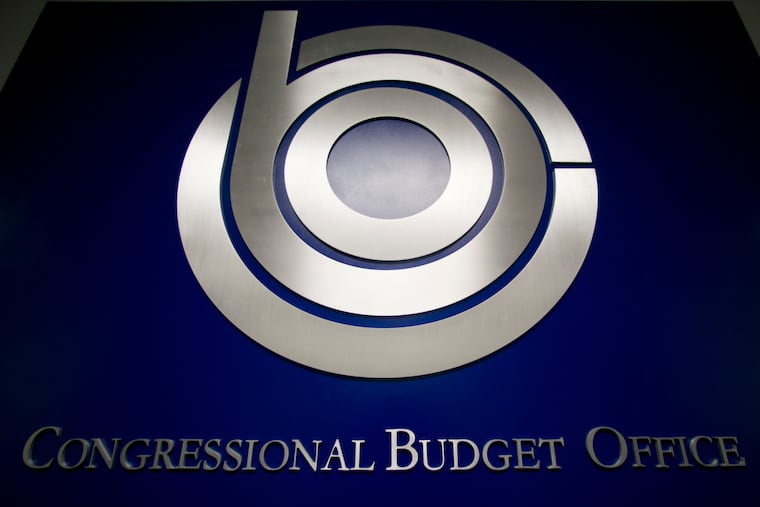Remember the federal deficit? It’s projected to reach the highest levels in history, CBO says
Spending is the bigger problem in the long-term, with the CBO expecting it to rise from 20.7 percent of GDP to 27.1 percent of GDP by 2049. Much of that increase is driven by higher health care costs.

WASHINGTON - The federal debt is set to rise over coming decades to the highest levels since World War II, as falling tax revenue and increased spending look likely to worsen the nation’s fiscal outlook, according to a report released Tuesday by the Congressional Budget Office.
In 2019, the debt held by the public amounted to 78 percent of the nation’s gross domestic product, compared to just 35 percent in 2007. That number is set to increase to 92 percent by the end of the next decade, as well as 144 percent by 2049, the report says.
“That level of debt would be the highest in the nation’s history by far, and it would be on track to increase even more,” the CBO report says. “The prospect of such high and rising debt poses substantial risks for the nation, and presents policymakers with significant challenges.”
Decreasing federal tax revenue are expected to widen the nation’s deficit, particularly in the short-term. In 2017, federal tax revenues amounted to 17.3 percent of the nation’s GDP. In 2019, two years after passage of President Donald Trump’s $1.5 trillion tax cut, that number that fell to 16.5 percent for this year for 2019.
But spending is the bigger problem in the long-term, with the CBO expecting it to rise from 20.7 percent of GDP to 27.1 percent of GDP by 2049. Much of that increase is driven by higher health care costs, with ballooning health care costs and the nation’s aging population expected to drive up spending on Medicare, the nation’s health insurance program for the elderly.
The CBO’s projections of the nation’s debt-to-GDP ratio are slightly smaller than last year’s, in part because interest rates have remained lower than previously projected. The CBO’s report also reflects lower-than-expected spending over the last year on some federal expenses, such as firefighting.
The highest-ever U.S. debt-to-GDP was 106 percent, reached in 1946. That number was prompted by a spending push to fund World War II, and other spikes in the debt have been driven by economic downturns.
But the U.S. is set to surpass that record in 2037, when the debt-to-GDP number reaches 108 percent, according to CBO. The current high debt levels come amid a relatively healthy economy, suggesting a structural gap between how much the country collects in taxes and how much it spends.
The “debt-to-GDP” measurement compares the overall amount of debt held by the federal government with the size of the entire U.S. economy. Economists use the comparison, which takes into account inflation and overall economic growth, to illustrate the scope of the deficit.
The report also points to a major decision for lawmakers over whether to extend much of the 2017 Republican tax law, which included numerous provisions set to expire in 2025. Twenty-three provisions in the tax law related to individual income taxes are set to end that year, according to the Tax Foundation, a conservative think tank.
The federal debt number calculated by CBO measures the amount the government has borrowed from financial markets when issuing securities to finance its operations, but not the Social Security Trust Fund.